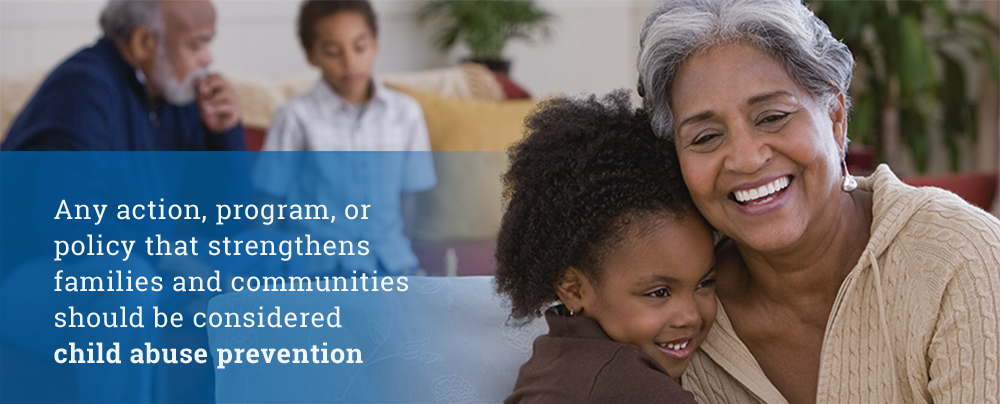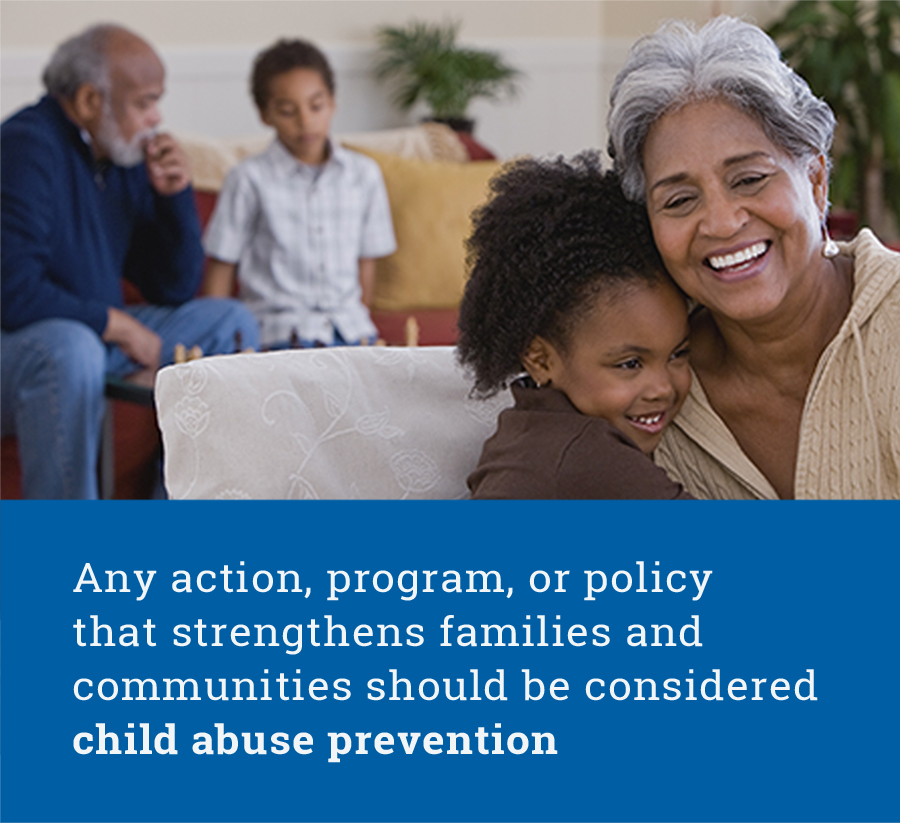What Is Texas' Vision for Prevention?
Despite the complex factors that can lead to child abuse, child abuse can be prevented — in fact, most people are already participating in prevention activities without realizing it!
PEI’s role in the creation of a Texas where all children thrive in their families is to apply our collective expertise to assist communities in identifying, developing, and delivering a system of family-strengthening programs and initiatives. These programs are designed to provide early intervention or prevent at-risk behaviors that lead to child abuse and neglect and other childhood adversities and promote positive outcomes for children, youth, families, and communities.
Citizen and community-level actions like mentoring children and youth, participating in community activities and campaigns, donating to service providers, supporting a parent in a challenging situation, supporting families through your faith community, and engaging in advocacy are all considered prevention. Any action, program, or policy that strengthens families and communities should be considered child abuse prevention.
Everyone Has a Role to Play
Collaboration is essential. Child abuse prevention cannot be done by any one profession, agency, or community alone. When we come together with a common cause, we can make thriving communities a reality. Below is a roadmap for a variety of strategies for everyone. More suggestions for community-level action are detailed in the section “Actions You Can Take”.
- Children, Youth, and Families
- Communities
- Systems
Children, Youth, and Families
- Are seen as the experts of their own experience.
- Have the tools, skills, and support needed to meet their potential.
- Should have equitable access to culturally responsive services and resources in their communities to meet their needs.
- Children are best cared for in their own families with equitable access to resources and supports to remain safely intact.
- All parents and caregivers have the skills and tools to meet the physical, intellectual, and emotional needs of their children.
Communities
- Acknowledge that there is work needed to rebuild trust in many communities and it’s up to communities to match their good intent with action and partnerships with families.
- Utilize innovations and adaptations to meet the best fit for families and communities.
- Experience the learning opportunities provided when community members don’t get the intended results.
- Pool knowledge, leverage differences, and co-create the definition of key terms, concepts, and success to bring about better results than any of us could achieve alone.
- Respect that learning and knowledge come from a variety of methods and sources, both empirical and experiential, and there is equal value in both.
- Integrate knowledge about the impact of trauma so that we can actively resist re-traumatization, and support actions and programs that promote healing.
- Acknowledge that a barrier to families seeking support sooner is the stigma associated with asking for help and seek to reduce this stigma as a component of prevention work.
Systems
- Listen to other perspectives about our work and needed changes in our systems is a key component of effective and meaningful change.
- Utilize a public health approach to identify the supports, policies, and structures in communities that help families be their strongest.
- Commit to long-term sustainable mindset shifts and systems change, even when situations demanding immediate response may momentarily slow the broader commitment to change.
- Collaborate and cooperate with systems in planning and implementing a comprehensive continuum of prevention services.
- Include the voices of those who will be impacted by the systems we seek to improve.
- Share power, resources and information, and use language that is easily understood and accessible.
- Recognize that there are disparities in experience, how individual families are treated, and outcomes of Black, Indigenous, and other people of color in child-serving systems.

